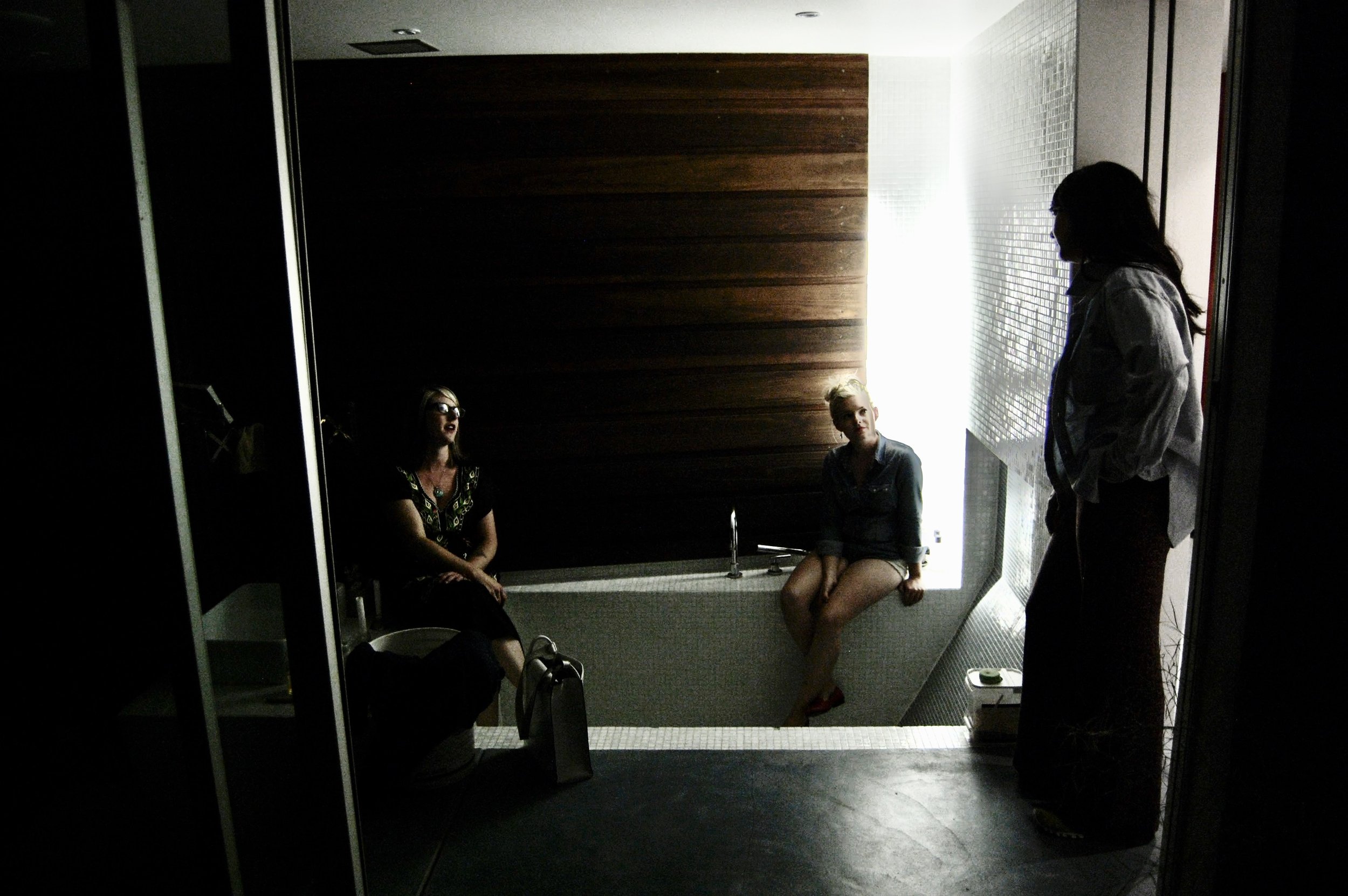Final Fridays - Emily Marchand
Emily Marchand is a visual artist and an integral part of the homeLA experience. Her artistic practice has shaped the spirit of homeLA and we are thrilled to be featuring her for our first Final Friday, where we will take a closer look at homeLA through the contributions of one of our most cherished collaborators. See our interview with here below.
______
Emily Marchand has worked with homeLA since its inception in 2013, punctuating our dance programming and enriching audience experience through conceptual and creative culinary delights.
Emily is a visual artist who works with ceramic, textiles, and food to address issues on climate change, food scarcity, agriculture, and the unhoused. Emily’s artistic practice has shaped her edible and sculptural contributions over the years, invigorating homeLA’s explorations of private/public space with ideas around exchange, generosity, and the dynamics of labor.
Emily Marchand sewing textile for A Thousand Lunches for CurrentLA, 2019 (Photo: Sam Widaman)
Emily’s work is playful, thoughtful, and delicious. Having participated in every homeLA, she is a linchpin for our returning audiences and often their first stop upon arrival. She, and her work, ground our events–not only by offering a sense of familiarity to a new space, but by layering sweet moments of artistry and hospitality into everything she does.
Her creations have taken many forms over the years:
J.B. MERRILL HOUSE, 2015
At the JB Merrill House in Mt Washington, she drew inspiration from herbs growing in the garden to create garnishes, syrups, and infusions for her cocktail.
VICTORIA PARK, 2016
For Victoria Park, Emily created a performative work titled Bread n Butter where she shook cream into butter for guests to eat with fresh bread she had prepared. Guests would commune over the food and drink, circle the room, and leave with snacks in hand–mimicking the daily rhythm of the bustling household.
NEUTRA VDL HOUSE, 2017
At the Neutra VDL House in Silverlake, Emily served eucalyptus and bay-infused cocktails with lemon in ceramic vessels she made, inspired by hummingbird nests in the trees above her at the house.
Emily’s contributions open the door for guests to enjoy a deeper engagement with the dance works and site. They are executed with a palpable sense of hospitality, nourishment, and generosity that embrace our common humanity–much like the work she does with the unhoused.
Emily’s work with the unhoused began in 2003 when she curated exhibitions to support Wind Youth Services, a leader for homeless youth services in Sacramento County. Since then, Emily has provided meals and sanitation kits to organizations like Downtown Women's Center in LA, MEND Poverty in Pacoima, and Brown Bag Lady on Skid Row. She and her teams of friends, family, and cooks have prepared over 1,000 kits and 3,500 meals for our unhoused neighbors.
Emily Marchand and Jacqueline Norvell, Founder of Brown Bag Lady, 2021 (Photo provided by artist)
Interview:
Tell us about your initial interest in homeLA, how you see your relationship to the project, and one of your favorite homeLA moments.
My interest in homeLA began when I was first exploring food, labor, and hospitality in relation to my art practice. Creating site-specific edibles was an exciting way to activate a space and invite people in to experience what each home had to offer. Initially, I would mold the house to fit the various concepts that I was interested in and now I find a richer experience in spending time in each home and allowing the house to dictate the flavor profiles that I use. One of my favorite homeLA moments was my very first event making cocktails in the bathtub with Elyse Reardon–Jung in Mount Washington. I wasn’t sure what the reception from the guests would be and everyone was so happy to get a cocktail from us! It was such a magical evening serving drinks and looking out onto a lily pond while dancers moved about the house.
Tell us how your practice relates to the work you are doing with the unhoused.
While my art practice examines food, food scarcity, survival symbols and ideologies, the reality that many people are starving is currently epidemic in this city. After years of speculative research about survivalism and making art about the current societies we live in, I see the actual reality of people in the most acute emergency situations in Los Angeles and I am grateful to use my skills towards helping people.
Why is this work important to you?
Homelessness is a deeply complex product of systemic failures that are rooted in race and class disparity. While the big picture is overwhelming, I believe that organizing within my community on a local level accomplishes a considerable amount. Through this, we are able to teach other people how to engage and organize in their own communities and we have learned that a little goes a long way!
Emily Marchand, Elyse Reardon-Jung, and Chloë Flores at bathtub in Mt Washington, 2013.








